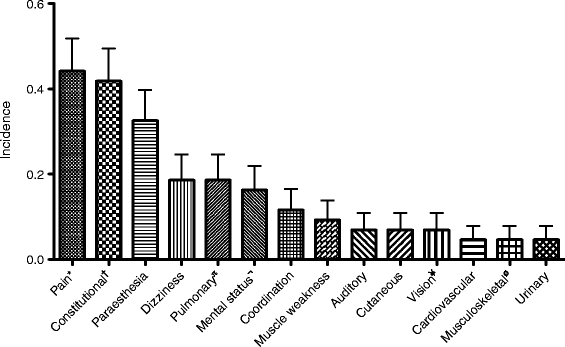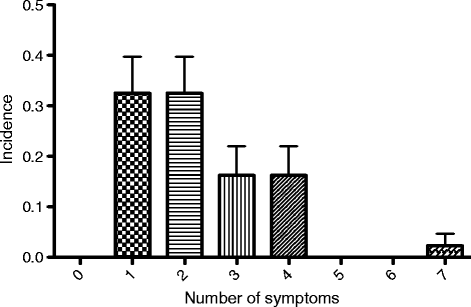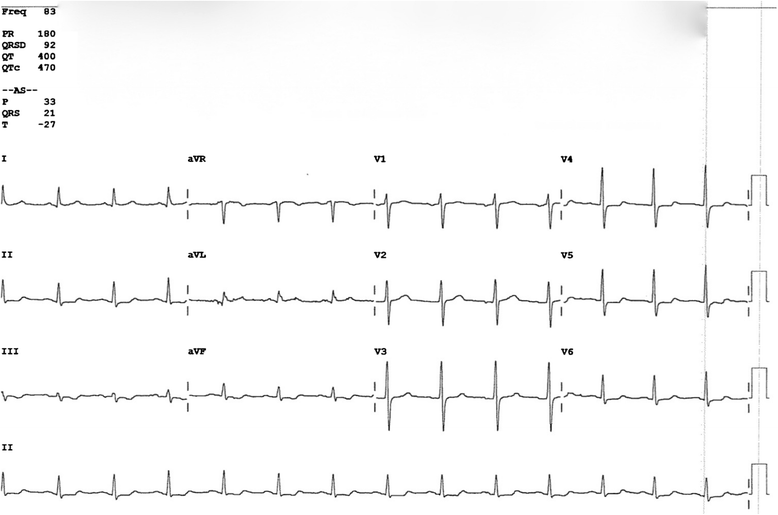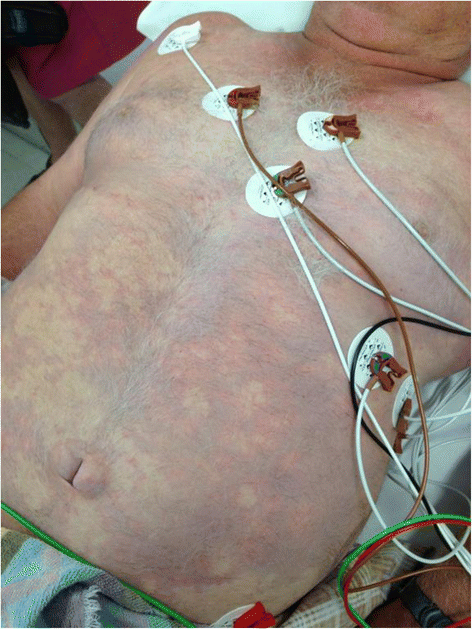Diving accidents: a cohort study from the Netherlands
- PMID: 26968856
- PMCID: PMC4788674
- DOI: 10.1186/s12245-016-0109-4
Diving accidents: a cohort study from the Netherlands
Abstract
Background: Diving is, besides professional reasons, an increasingly popular leisure activity. Whilst statistically compared to other sports safe, diving accidents can result in serious complications. In order to treat this specific patient category adequately, early diagnosis is important. In this study, we explore various medical aspects of diving accidents. By sharing our experiences, we intend to create awareness and enhance urgent medical care for this specific category of patients.
Methods: We conducted a retrospective cohort study using anonymized patient records from the emergency department (ED) of the Admiraal De Ruyter Hospital (ADRZ) and affiliated Medical Centre Hyperbaric Oxygen Therapy (MCHZ1) both in Goes, Netherlands. We evaluated all patients that presented to our ED as a diving accident from 1 November 2011 to 30 August 2015.
Results: In the selected period, 43 patients presented to our ED with complaints after diving; 84 % were male and 49 % older than 40 years, and they came by ambulance or referred by a general practitioner or other medical centres in the area; 70 % presented the same date as their dive, 21 % 1 to 3 days and 9 % later than 3 days after having dived. Pain was the most frequently reported symptom (44 %), followed by constitutional symptoms (42 %). Numbness or paraesthesia was reported in 33 %. Respiratory symptoms, dizziness, a change in mental status (e.g. apathy, confused or restlessness) and problems with coordination were present in 10-21 % of the cases. Symptoms that were apparent in less than 10 % of the cases were cutis marmorata, visual or auditory complaints, muscle weakness, cardiovascular symptoms or a malfunction of the anal sphincter or urinary bladder. Most of our patients exhibited more than one symptom; 70 % of all patients received hyperbaric oxygen recompression therapy.
Conclusions: The limited number of patients presenting with complaints after a diving incident, the difficulty of recognition and the (potential) huge impact if not recognized and treated adequately make us believe that every diving accident should be discussed with a centre of expertise.
Figures




Similar articles
-
Recompression treatment for decompression illness: 5-year report (2003-2007) from National Centre for Hyperbaric Medicine in Poland.Int Marit Health. 2008;59(1-4):69-80. Int Marit Health. 2008. PMID: 19227740
-
Specialist advice may improve patient selection for decompression therapy following diving accidents: a retrospective observational study.Scand J Trauma Resusc Emerg Med. 2017 Oct 19;25(1):101. doi: 10.1186/s13049-017-0447-0. Scand J Trauma Resusc Emerg Med. 2017. PMID: 29052534 Free PMC article.
-
Open water scuba diving accidents at Leicester: five years' experience.J Accid Emerg Med. 1999 May;16(3):198-200. doi: 10.1136/emj.16.3.198. J Accid Emerg Med. 1999. PMID: 10353047 Free PMC article.
-
[Hyperbaric therapy and diving medicine - diving medicine - present state and prospects].Anasthesiol Intensivmed Notfallmed Schmerzther. 2015 Oct;50(10):638-45; quiz 646. doi: 10.1055/s-0041-102483. Epub 2015 Oct 28. Anasthesiol Intensivmed Notfallmed Schmerzther. 2015. PMID: 26510109 Review. German.
-
[First therapy of decompression injuries].Anasthesiol Intensivmed Notfallmed Schmerzther. 2010 Feb;45(2):80-6. doi: 10.1055/s-0029-1243380. Epub 2010 Feb 12. Anasthesiol Intensivmed Notfallmed Schmerzther. 2010. PMID: 20155636 Review. German.
Cited by
-
Oxidative Stress, HSP70/HSP90 and eNOS/iNOS Serum Levels in Professional Divers during Hyperbaric Exposition.Antioxidants (Basel). 2022 May 20;11(5):1008. doi: 10.3390/antiox11051008. Antioxidants (Basel). 2022. PMID: 35624872 Free PMC article.
References
-
- CBI . CBI product factsheet: dive tourism from Europe. 4 (CBI Market Intelligence) 2015.
-
- Vann R, Lang M. Recreational diving fatalities. Undersea Hyperb Med. 2011;38:257–260. - PubMed
-
- Rivera JC. Decompression sickness among divers: an analysis of 935 cases. Mil Med. 1964;129:314–334. - PubMed
-
- Longphre JM, Denoble PJ, Moon RE, Vann RD, Freiberger JJ. First aid normobaric oxygen for the treatment of recreational diving injuries. Undersea Hyperb Med. 2007;34:43–49. - PubMed
LinkOut - more resources
Full Text Sources
Other Literature Sources

